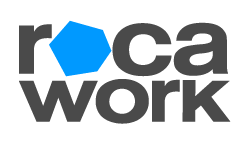Routing In Customer Service Operations Mastery
Efficient ticket routing is at the heart of any high-performing customer service operation. The way you assign incoming tickets to your agents affects not only how quickly issues are resolved but also the morale of your team and the overall customer experience.
Below, we explore four proven routing strategies, each with its own advantages. Whether you're a startup or a large enterprise, choosing the right method—or a combination of them—can help you optimize support workflows and improve service quality.
First-In, First-Out
Best for: Fairness and straightforward ticket queues
The First-In, First-Out (FIFO) method processes tickets in the exact order they are received. It’s a classic approach, rooted in simplicity and fairness. There’s no prioritization of urgency, complexity, or customer profile—just a strict sequence. Every ticket is handled in turn, reducing ambiguity and giving all customers equal treatment.
This approach works well in environments where most customer inquiries are similar in nature and urgency. It also helps prevent cherry-picking, where agents might favor easier or more interesting tickets. FIFO ensures that no request is unfairly delayed just because it's more complex or less appealing.
However, it's important to note that this method can be limiting if your support needs vary widely. For instance, if a high-value customer’s urgent issue comes in right after a dozen minor requests, FIFO may not allow for the flexibility needed to respond appropriately.
Advice: Use FIFO when your ticket volume is steady, inquiries are relatively uniform, and your goal is to maintain a transparent and unbiased workflow.
Skill-Based Routing
Best for: Specialized teams and complex product environments
Skill-based routing assigns tickets according to an agent’s expertise, experience level, or training. This is a more advanced method, often used in tiered support systems where different levels of service exist—such as Tier 1 (basic questions), Tier 2 (technical inquiries), and Tier 3 (compliance or escalation cases).
In this model, the routing system matches incoming issues with the agents best equipped to handle them. This reduces the time agents spend transferring tickets internally and increases the likelihood of resolving customer problems quickly and accurately.
This approach is particularly effective when dealing with a broad range of product or service issues. For example, if your software company supports both casual users and enterprise clients, skill-based routing ensures that each customer receives help from someone who understands their specific needs.
Advice: Implement skill-based routing if your team has a diverse skill set or if your product requires varying levels of technical knowledge. Make sure agent skills are clearly documented and updated regularly to keep routing accurate.
Load-Balanced Routing
Best for: Equal distribution of workload and agent well-being
Load-balanced routing takes into account the current number of open tickets each agent is handling. Rather than sending tickets to the next available person or someone with a matching skill, this method prioritizes agents who have the lightest current workload.
The goal is to prevent burnout, promote fairness among the team, and make sure tickets are handled in a timely manner without overloading any individual. It’s especially helpful in fast-paced environments where support volume can fluctuate rapidly.
In practice, this method helps reduce response time by ensuring that no single agent is overwhelmed while others are underutilized. Over time, it can improve job satisfaction and reduce attrition by keeping workloads manageable and balanced.
Advice: Consider load-balanced routing if your team struggles with uneven ticket distribution or if you're seeing signs of agent fatigue. Combine this method with clear performance metrics to avoid over- or underestimating each agent’s capacity.
Priority-Based Routing
Best for: Service tiers, urgent issues, and customer segmentation
Priority-based routing classifies tickets based on urgency, impact, or customer profile, rather than the order in which they were received. High-priority tickets are fast-tracked, while lower-priority ones wait in the queue until resources are available.
This method is particularly useful when certain customers or types of issues must be addressed immediately—such as major outages, compliance matters, or VIP client concerns. It also works well in environments where customer retention and satisfaction are highly dependent on fast and personalized responses.
Tickets can be prioritized based on a variety of factors: monetary value of the customer, emotional tone (e.g., angry or frustrated messages), service level agreements (SLAs), or even past interaction history. With the help of automation or AI tools, these factors can be analyzed in real time to guide routing decisions.
Advice: Use priority-based routing when your organization serves customers with varying levels of urgency or value. Define clear rules for prioritization to avoid confusion and maintain consistency across your team.
Conclusion
There is no one-size-fits-all solution when it comes to ticket routing. Each business has unique workflows, team structures, and customer needs that call for a customized approach. Often, the most efficient strategy is a hybrid of multiple routing methods.
For example, combining skill-based routing with priority-based routing ensures that the right expert handles the most critical issues. Adding a load-balancing layer can further optimize the distribution of work and protect team morale. Even FIFO has its place in simpler or smaller support teams where fairness and transparency are paramount.
The key is to evaluate your operational goals, available tools, and customer expectations—then build a routing system that supports your long-term strategy.
Let’s get to know each other!
